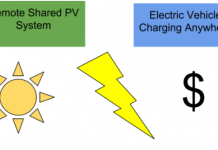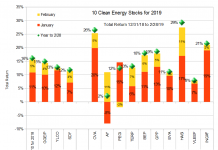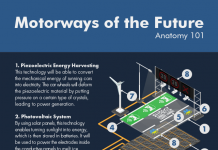John Petersen
As a result of sweeping regulatory changes, the second decade of the new millennium is shaping up as a time of unprecedented progress in automotive fuel efficiency. In the EU, where small cars have been prevalent for decades, gasoline prices of $5 to $8 per gallon are the norm and consumers prize diesel engines, new regulations will require automakers to reduce tailpipe CO2 emissions to an average of 130 grams per kilometer (g/km) as follows:
- For 65% of the fleet, by 2012;
- For 75% of the fleet, by 2013;
- For 85% of the fleet, by 2014; and
- For 100% of the fleet, by 2015.
The penalties for non-compliance start at €5 per vehicle for the first g/km, and ramp up to €15 per vehicle for the second g/km, €25 per vehicle for the third g/km, and €95 per vehicle for each subsequent g/km. The EU’s long-term target is 95 g/km by 2020. The following data comes from the European Federation for Transport and Environment and shows how automakers stacked up against the standards in 2008.
| 2008 Sales | CO2 g/km | |
| Fiat | 1,131,005 | 138 |
| PSA Peugeot-Citroen | 1,794,593 | 139 |
| Renault | 1,253,371 | 143 |
| Toyota | 784,054 | 147 |
| Hyundai | 467,673 | 149 |
| Ford | 1,388,335 | 152 |
| GM | 1,366,069 | 153 |
| Honda | 245,395 | 154 |
| BMW | 784,736 | 154 |
| Suzuki | 229,074 | 156 |
| Mazda | 229,596 | 158 |
| Volkswagen | 2,870,570 | 159 |
| Nissan | 323,340 | 161 |
| Daimler | 760,925 | 175 |
| Total | 13,628,736 | 151 |
The bottom line is automakers must improve the efficiency of their European fleets by an average of 14% over the next few years or pay dearly for their failure to do so. This is a today issue, not a someday issue.
While the EU standards are aggressive, the challenges facing US automakers are even more daunting because they’re starting from a less efficient baseline. The following chart comes from the EPA and shows the adjusted fuel economy for cars and light trucks sold in the US from 1975 through 2009.

Last September the EPA and the NHTSA published their proposed rules for Light Duty Vehicle Greenhouse Gas Emission Standards and Corporate Average Fuel Economy Standards. While the rules have not been finalized, they leave no doubt that the pressure on US automakers to radically and immediately improve fuel economy will be immense. The following table summarizes the proposed fuel economy standards, in miles per gallon, for the next few years.
| 2011 | 2012 | 2013 | 2014 | 2015 | 2016 | |
| Passenger Cars | 30.2 | 33.6 | 34.4 | 35.2 | 36.4 | 38.0 |
| Light Trucks | 24.1 | 25.0 | 25.6 | 26.2 | 27.1 | 28.3 |
| Combined Cars & Trucks | 27.3 | 29.8 | 30.6 | 31.4 | 32.6 | 34.1 |
Unlike the European rules, the proposed EPA and NHTSA rules will not let vehicle manufacturers pay fines in lieu of meeting emission standards. So once again, this is a today issue, not a someday issue. The following data comes from the Executive Summary Tables that accompany a recent EPA report on Light-Duty Automotive Technology, Carbon Dioxide Emissions, and Fuel Economy Trends: 1975 Through 2009 and shows how the principal US automotive marketing groups stacked up against the proposed standard in 2009.
| MPG | |
| Honda | 23.6 |
| Hyundai-Kia | 23.4 |
| Toyota | 23.2 |
| Volkswagen | 22.8 |
| Nissan | 21.6 |
| BMW | 21.6 |
| General Motors | 19.9 |
| Ford | 20.5 |
| Chrysler | 18.7 |
| All | 21.1 |
The bottom line is automakers may well be required to improve the efficiency of their US fleets by an average of 29% by 2012 and by a whopping 38% by 2016. Absent a tea party style revolt among new car buyers, I expect pickups, vans and SUVs to all but disappear from the marketplace. Even with smaller European type vehicles, the bulk of the work will have to be done with a combination of proven technologies that are fully developed and ready for widespread commercialization today, including:
| Efficiency | |
| Hybrid Electric Technologies | Gain |
| Prius-class strong hybrids with idle elimination, electric-only launch, recuperative braking and acceleration boost. | 40% |
| Insight-class mild hybrids with idle elimination, recuperative braking and acceleration boost. | 20% |
| Engine Technologies | |
| Direct Fuel Injection (with turbocharging or supercharging) delivers higher performance with lower fuel consumption. | 11-13% |
| Integrated Starter/Generator Systems (e.g. stop-start systems) automatically turn the engine on/off when the vehicle is stopped to reduce fuel consumed during idling. | 8% |
| Cylinder Deactivation saves fuel by deactivating cylinders when they are not needed. | 7.5% |
| Turbochargers & Superchargers increase engine power, allowing manufacturers to downsize engines without sacrificing performance or to increase performance without lowering fuel economy. | 7.5% |
| Variable Valve Timing & Lift improve engine efficiency by optimizing the flow of fuel & air into the engine for various engine speeds. | 5% |
| Transmission Technologies | |
| Automated Manual Transmissions combine the efficiency of manual transmissions with the convenience of automatics (gears shift automatically). | 7% |
| Continuously Variable Transmissions have an infinite number of “gears”, providing seamless acceleration and improved fuel economy. | 6% |
The foregoing list of energy efficiency technologies was assembled from data on the EPA’s www.fueleconomy.gov website and is not exhaustive. With the exception of the VTEC variable cam and valve timing technology that Honda first introduced in the Acura NSX (far and away the finest car I’ve ever owned) I don’t know who the leaders are. My sense is that almost everybody is working on their own variants for most of these technologies because the pressures are so great and the timing is so tight.
I regularly mock plug-in vehicles because even the EPA acknowledges that “electric cars and trucks are unlikely to be available in large volumes anytime soon,” which is a polite way of saying they won’t be more than vanity products for years and those that are produced will be horrendously inefficient at reducing national gasoline consumption and CO2 emissions. The more important issue is that manufacturing plug-ins will directly and adversely impact the auto industry’s ability to meet rigorous short-term CO2 emission and CAFE standards that are either in place or will be shortly. It’s all well and good to daydream about rescuing the princess, but if a dragon guards her you have to deal with first things first.
Batteries are critical enabling devices for three of the four most important fuel efficiency technologies. For the next several years, every vanity car with a plug that rolls off an assembly line will preclude the production of 10 to 20 affordable fuel efficient vehicles. The dynamic may change toward the end of the decade when current battery research may result in the a new generation of inexpensive, safe and abuse tolerant electric drive batteries, but over the next five years fleetwide efficiency will be the only thing that matters.
Ultimately efficiency will be the touchstone for all successful alternative energy investments. Those that deliver more work with lower natural resource inputs will be very successful. Those that deliver less work with higher natural resource inputs will fail. The laws of economic gravity will not tolerate another outcome. While the bulk of the market’s attention will invariably focus on the gee whiz, the bulk of the money will be made in mundane applications and sectors that focus primarily on saving money and only secondarily on saving the planet.
Disclosure: No companies mentioned.








